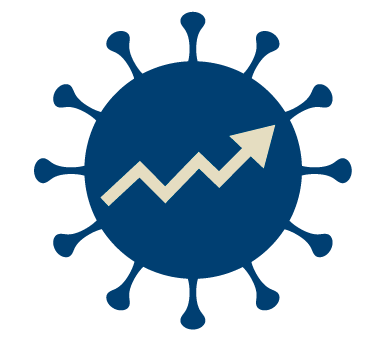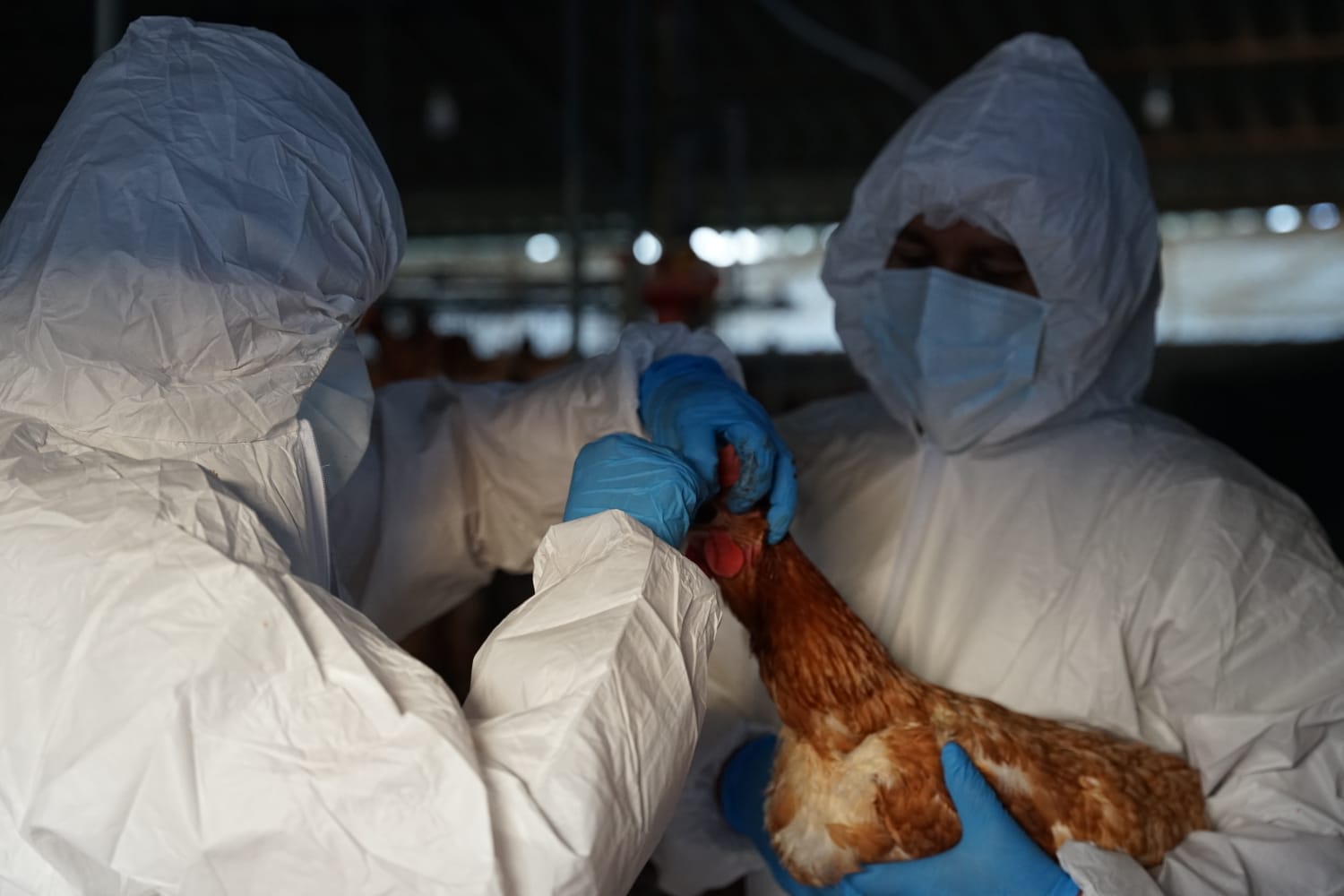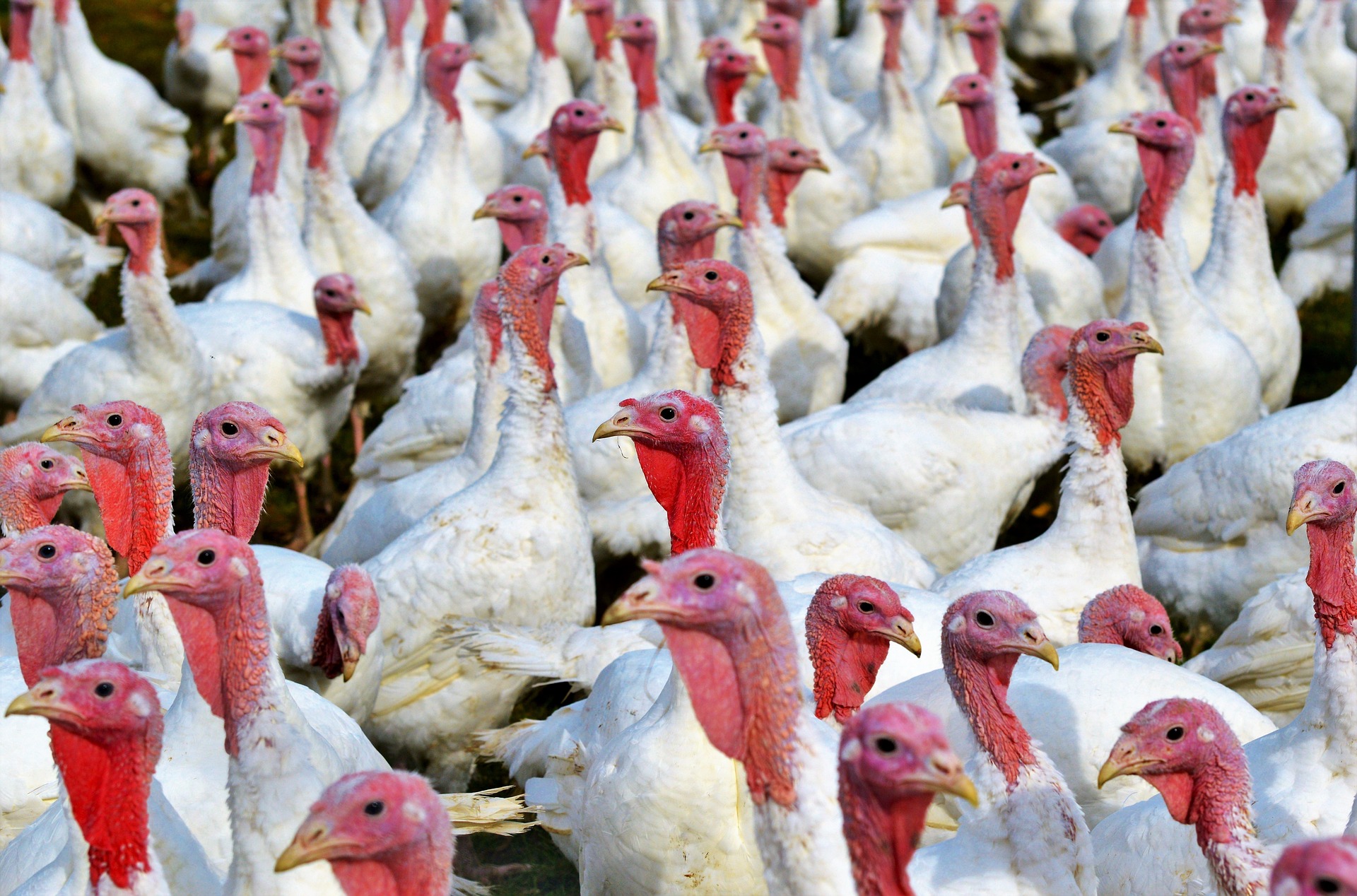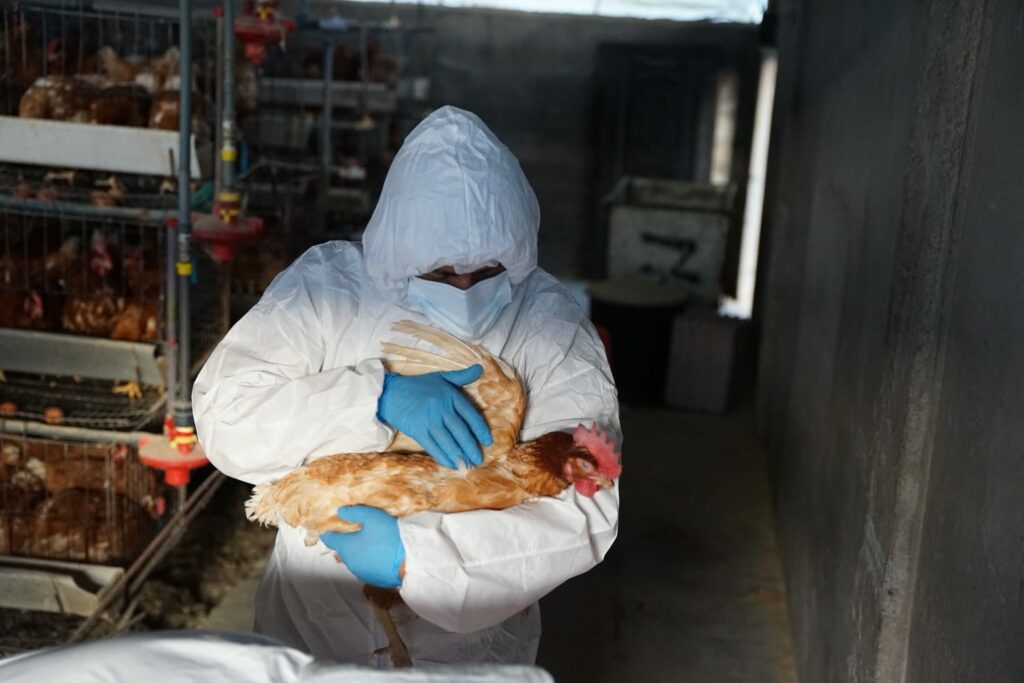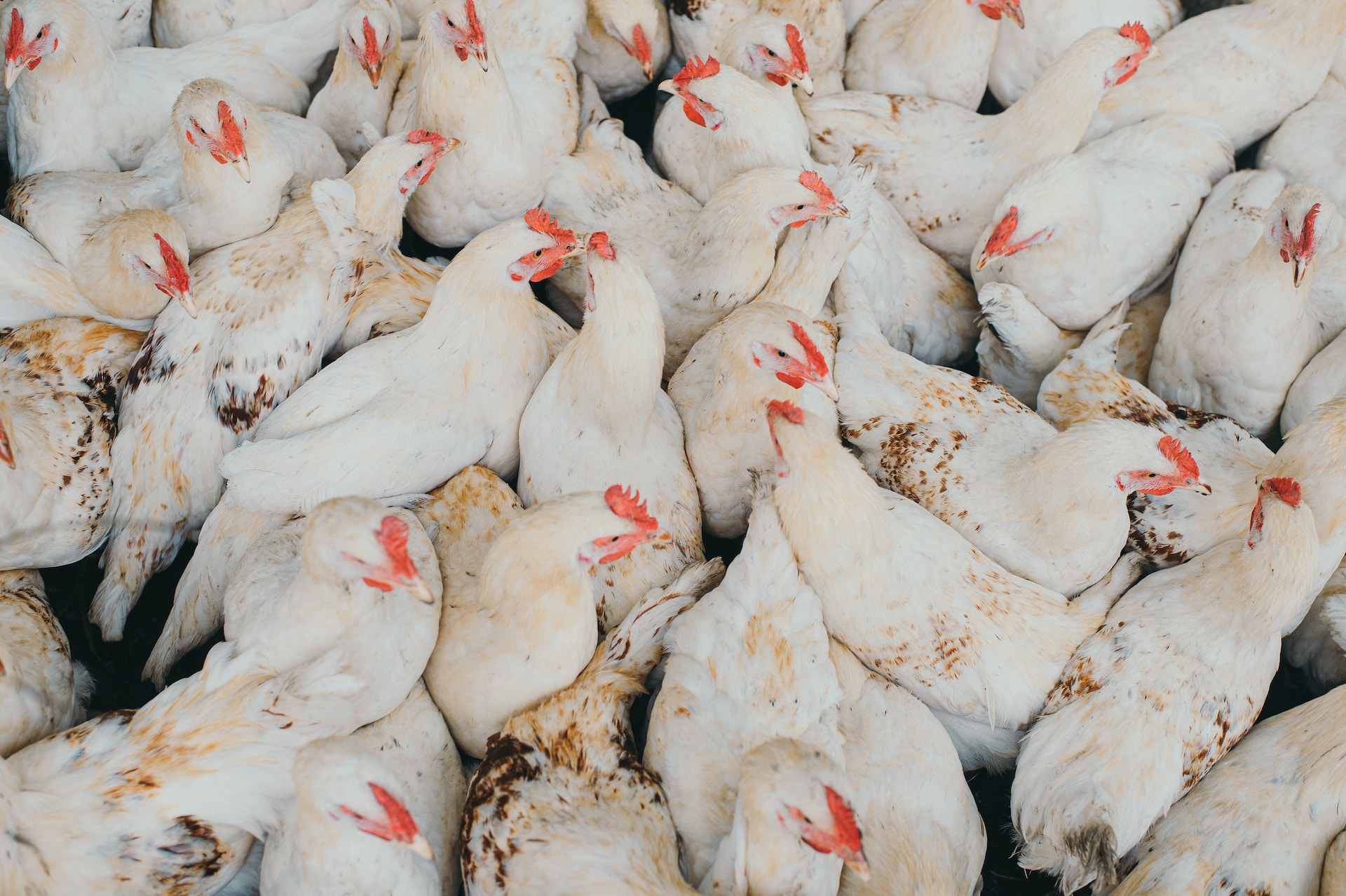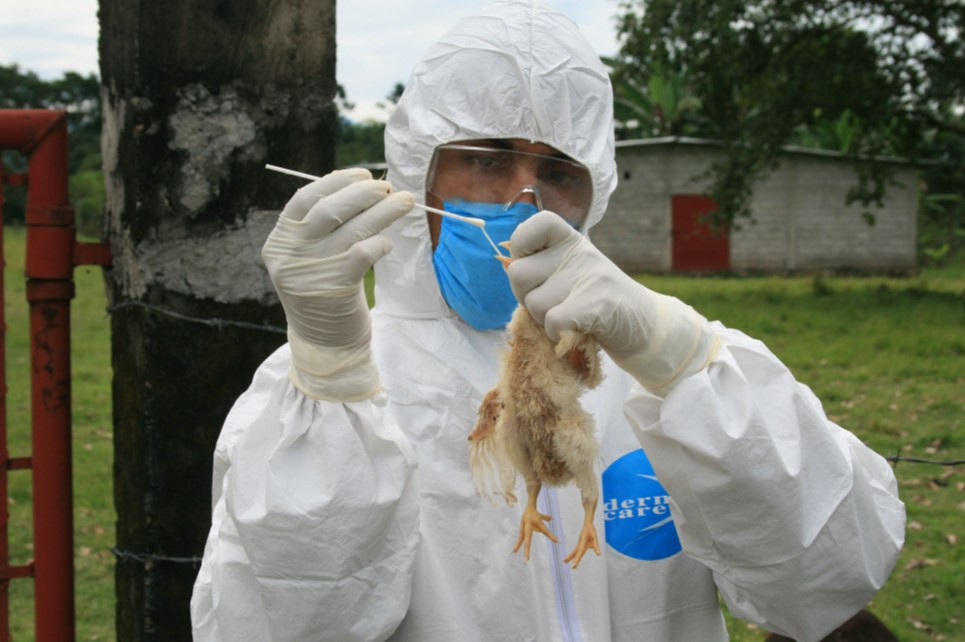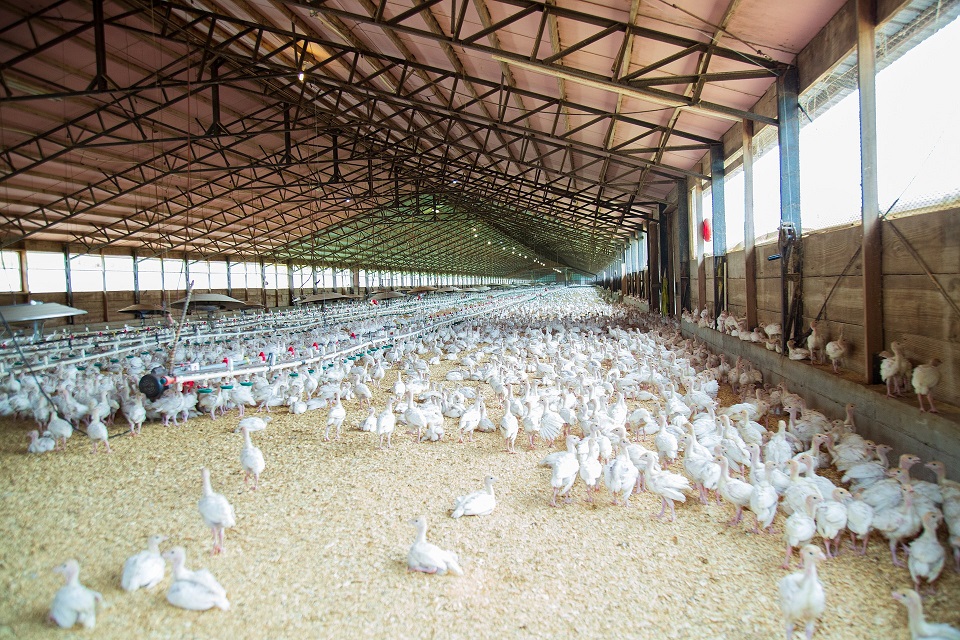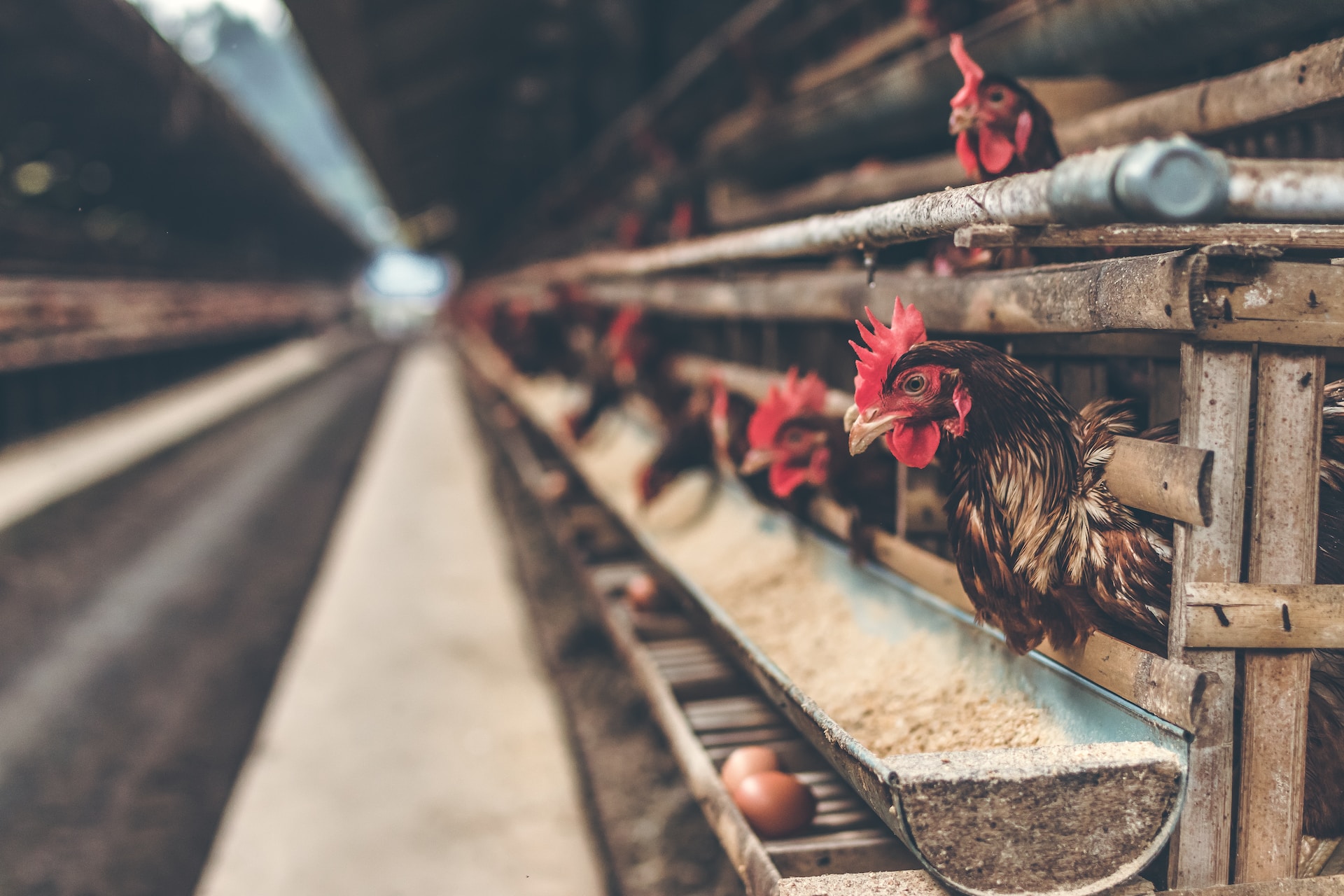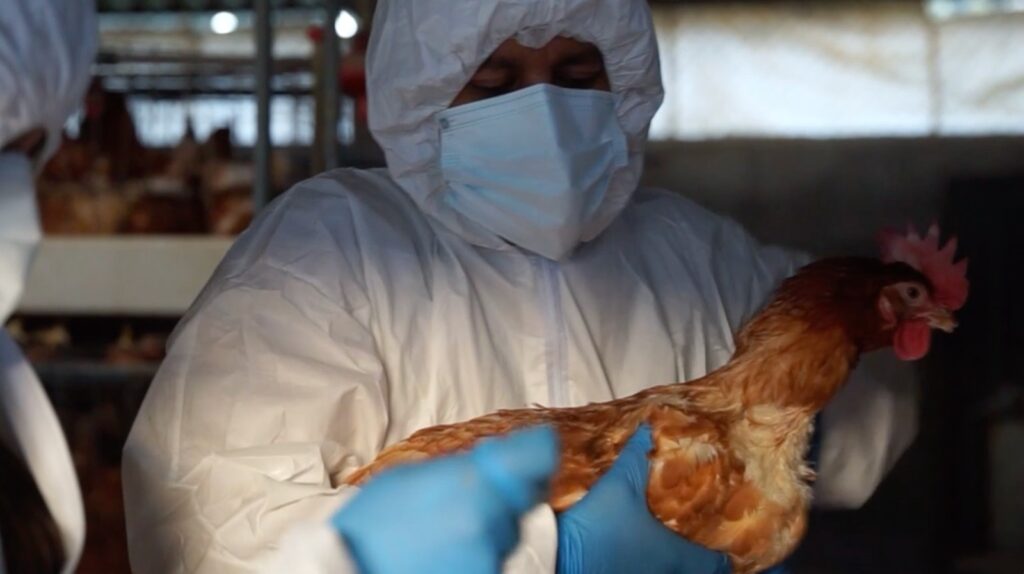Biosecurity
Once H5N1 has entered a poultry population, all the birds are doomed. Among poultry H5N1 is highly infectious and very lethal. Therefore entire populations are culled with carbon dioxide or by drowning the birds in a water-based foam. Another method, called ventilation shutdown plus (VSD+), consists of turning off the oxygen supply and increasing the heat until the birds die. Some politicians suggest that possible survivors of the infection should be bred to create poultry resistant to avian influenza. But this idea is incompatible with how chickens are bred, the lack of genetic diversity, and the already determined number of mutations required for immunity.
So far at least 140 million chickens have died, but the actual number by now is probably well over 200 million. While those numbers are high, this is not even one percent of the global chicken population of over 30 billion, sustained by demand of billions of consumers. As long as H5N1 keeps spreading, the culling will continue and the numbers will rise.
How, then, are the commercial birds, in the developed world or in a modern poultry operation, a petri dish for the next pandemic? Especially given that the policy is often to kill infected birds immediately, dispose of them properly and then enact strict biosecurity measures to limit disease spread.
Quammen’s argument hopes to appeal to a reader who is: afraid of another pandemic, under-educated on animal agriculture and probably already biased against the agriculture industry. Times readers are, after all, perpetually coached by its editorial pages to feel bad about eating meat or using animal products. The author is certainly an expert on wildlife, but perhaps not domesticated animals.
But getting access to these methods on short notice requires advance planning — having standing contracts with companies that can supply CO2 gas, for example — that neither the meat industry nor its regulators appear interested in ensuring is in place. VSD+, on the other hand, can more easily be arranged in a pinch because heaters can be rented off-the-shelf from equipment companies. When disaster strikes, livestock producers that failed to prepare can simply say they had no choice but to kill their animals with heatstroke.
Poultry Vaccines
Due to fears of a "leaky" vaccine causing the undetected spread of H5N1, poultry has so far rarely been vaccinated in Europe and the USA. After all outbreaks are easily detectable and depopulation denies the virus any possible short-term advantages. The HVT-H5 vaccines from Ceva Sante Animale and Boehringer Ingelheim Animal Health have recently been shown to be 100% effective. This may lead to a change of vaccination policies in the USA and Europe. It is worth noting that the more risky Chinese approach may have reduced the number of human infections, but has not entirely stopped the outbreak.
Two vaccines have been granted temporary authorizations for the campaign, Volvac B.E.S.T. AI + ND from Boehringer Ingelheim Animal Health France and CEVA Response AI H5 vaccine from Ceva Sante Animal, with BI winning the first supply tender.
Eggs
Egg prices are influenced by bird loss due to avian influenza. While food safety recommendations aim to prevent Salmonella infections, the requirements for H5N1 heat inactivation are very similar. Just a few degrees make all the difference. The deficits in consumer egg preparation safety cause around 250.000 Salmonella infections in the USA each year. While a few percent of raw eggs undergo in-shell pasteurization, this doesn't affect regular eggs and the risks associated with the consumption of raw eggs.
Poultry Litter
Poultry litter consists mostly of poultry excrement and is used as feed for livestock. Unfortunately poultry excrement contains many nutrients and is very cheap. This results in strong economic incentives to replace around 20% of livestock feed with poultry litter.
Genetically Modified Chickens
A promising approach is to genetically modify chickens to achieve complete immunity. This is done by disabling the production of naturally occurring proteins that the virus needs to replicate. It is uncertain how well the chickens will fare with several proteins disabled. While more testing is required, the first completely immune chickens could reach consumers in just a few years.
